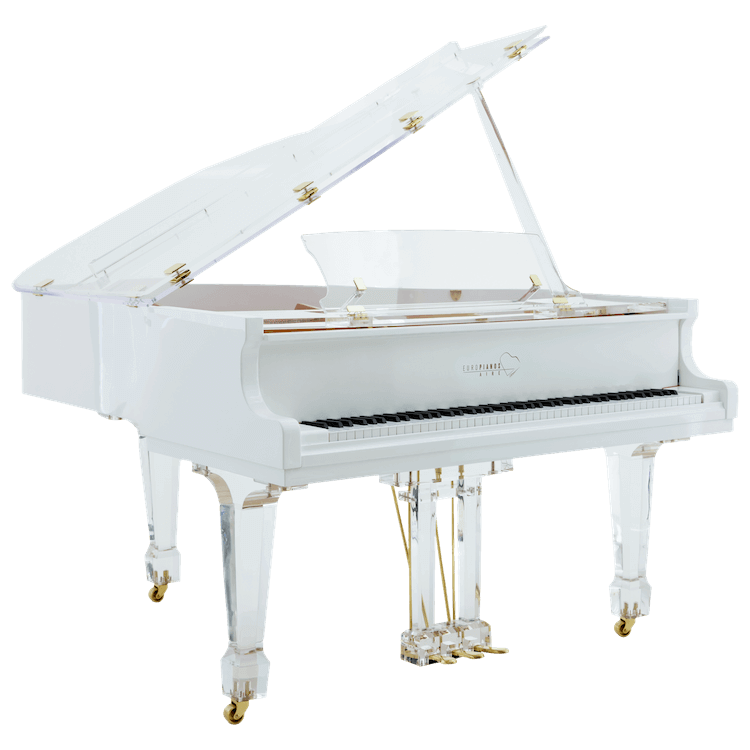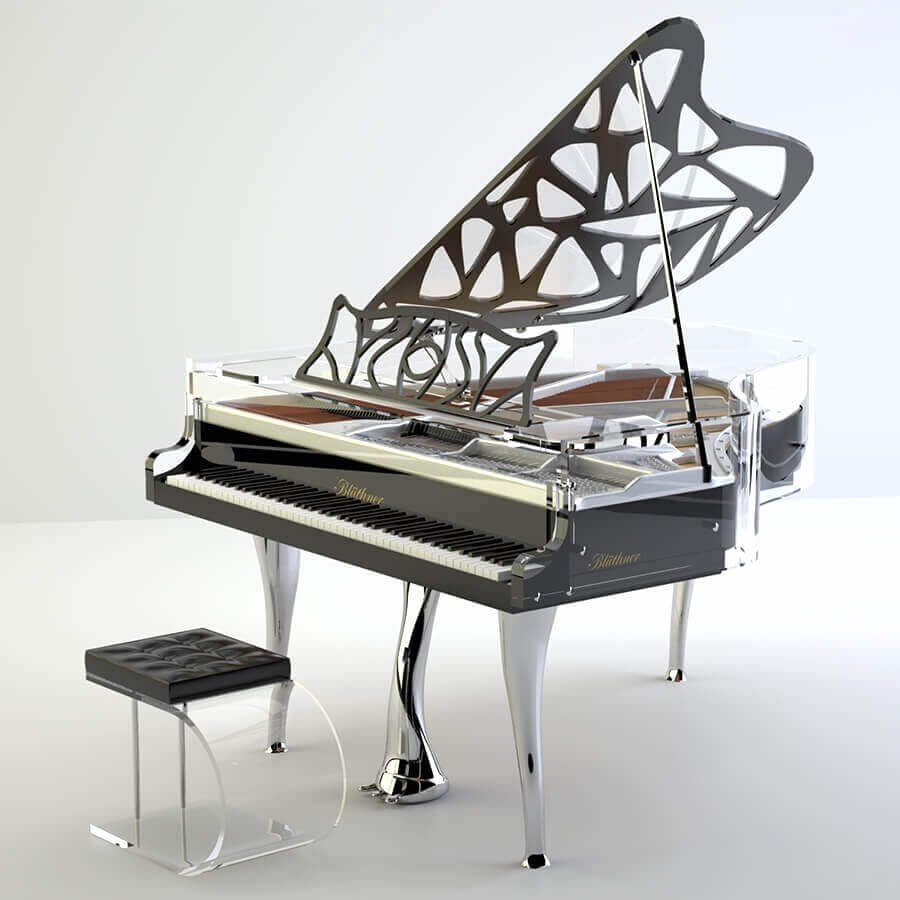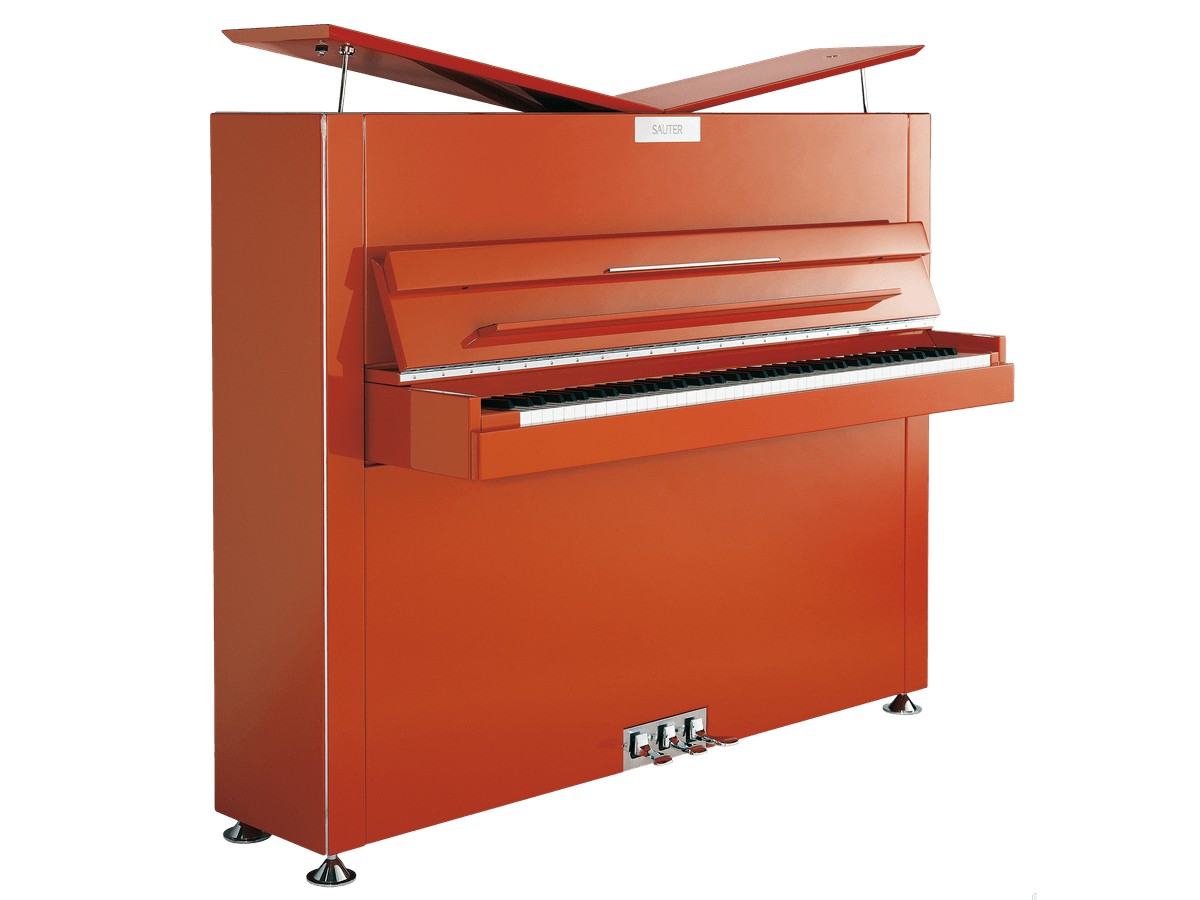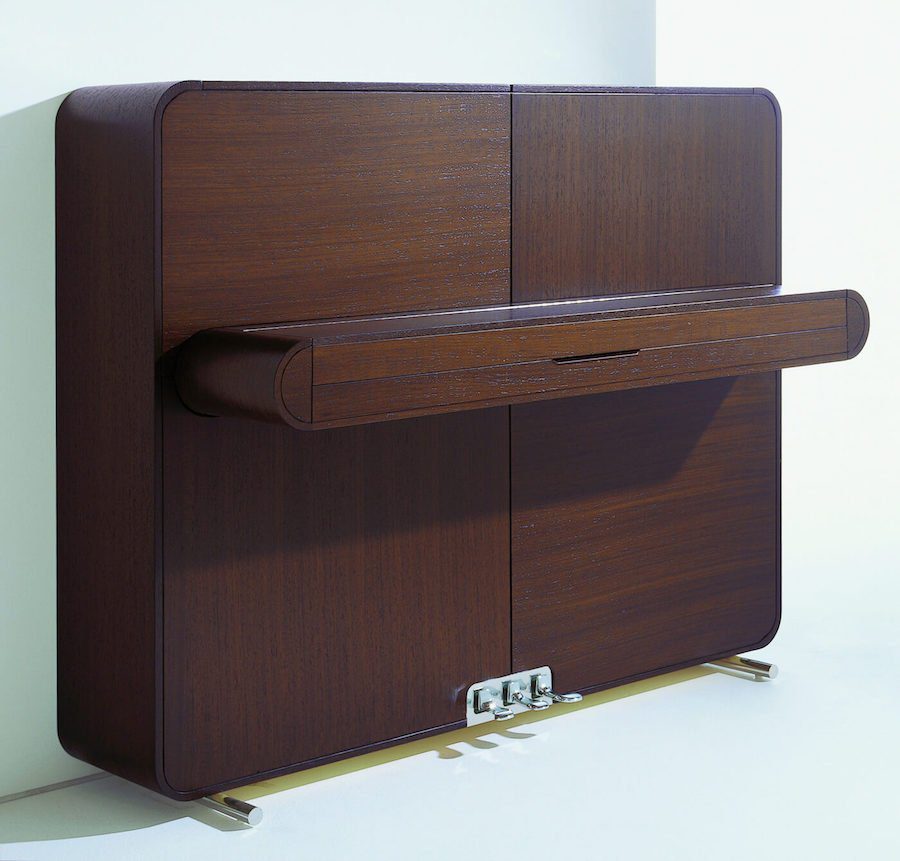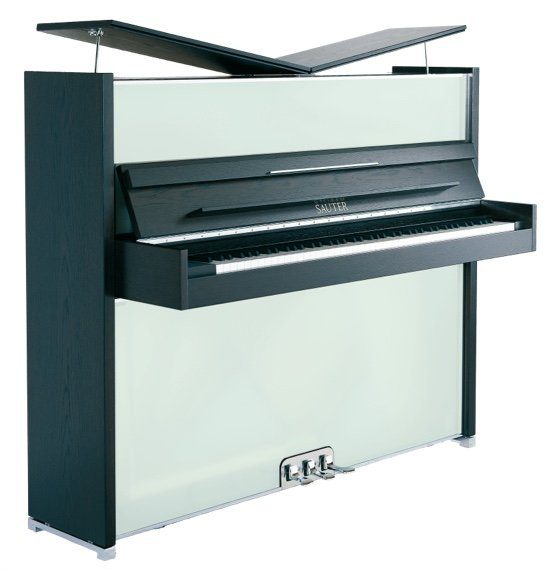Modern Grand Piano
When one uses the word “modern” to describe pianos, you are getting into very subjective territory. Pianos over the decades have gone through transformations of shapes and sizes, handmade to mass-produced, and technologically aided and abetted with computer software, players system and gizmos. Manufacturers have added extra piano keys, extra piano pedals, and intricate improvements to the mechanisms within, but realistically, the piano of the 1700’s is almost as “modern” as the modern piano of today.
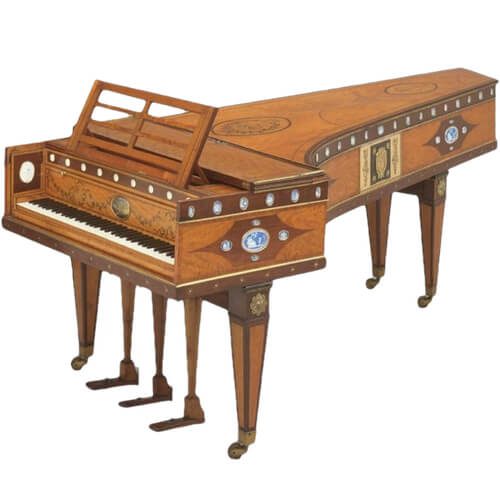
1796 John Broadwood & Son Grand piano
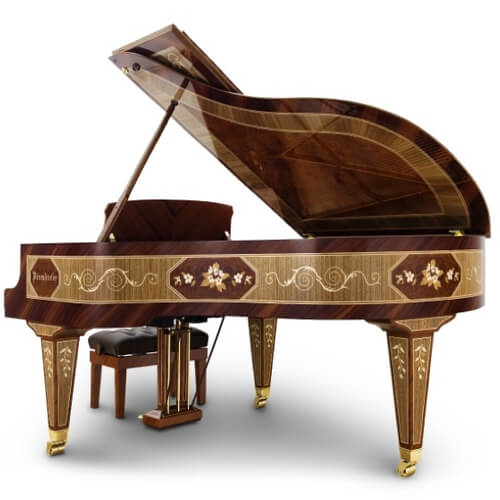
20th Century Bosendorfer Artisan
Pipe organs could be considered the grandfather of pianos and can be traced back to Ancient Greece. They were the wellspring for experimenting with hammers striking strings instead of driving pressurized wind through a pipe via a keyboard. By the Middle Ages, “hammered dulcimers” were used. By the 17th century, the mechanics of the clavichord and the harpsichord were advanced. In a clavichord, the strings are struck by small brass blades called tangents. In a harpsichord, strings are mechanically plucked by quills when the key is struck.
Centuries of work on the harpsichord in particular led the way for builders to learn how to construct the case, soundboard, bridge, and mechanical action for a keyboard intended to sound strings.
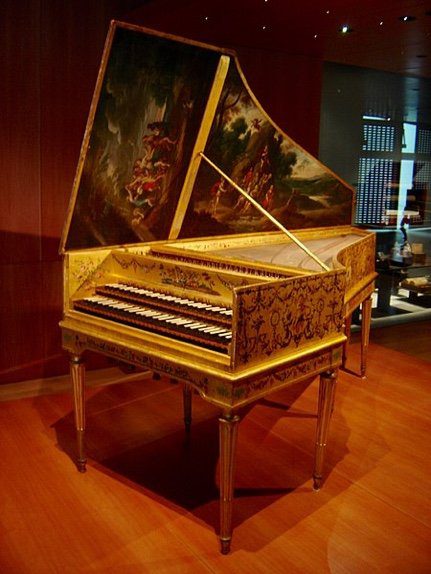
Harpsichord by Ruckers 1646
Who Invented the Modern Piano?
The first known piano presented in Florence, Italy in 1709 was made by Bartolomeo de Francesco Cristofori. He called this new instrument “gravicembalo col piano e forte” (translates to “soft and loud keyboard instrument”), and was shortened to “pianoforte” or “fortepiano” and later to “piano.”
The Modern Grand Piano
The Grand piano has become the bastion of the concert hall. Professional pianists, in order to create their best performances require instruments which produce the best possible sound. The most fundamental difference in a grand piano from baby grands or uprights, is the length of the strings. All else being equal, the longer the strings of a piano, the larger the soundboard area, the larger and richer the sound, with lower dissonance of the strings. Baby grands and uprights having shorter and sometimes thicker strings, can have more dissonance which is perceived as a harshness of tone. The ability of the concert grand piano to “stretch” octaves sustains its brilliant, singing tone quality.
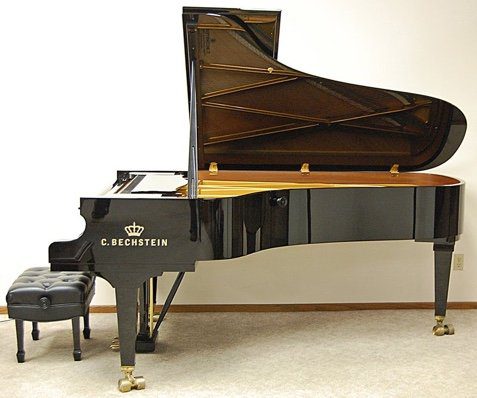
Bechstein Concert Grand Model 232
The most prestigious European manufacturers compete to make their concert grand pianos the ultimate in striking tonal quality and beauty. Their classic ebony cases are the norm as in the Bechstein 232 above.
The concert piano is created for the symphonic stage, concert halls and opera houses. But of course any magnificent private home with enough space to handle the volume, tone and timbre of such a large instrument can do justice to a concert grand. Designers may request changes to the case color, or added embellishments, special woods, inlays, semi-precious gems or even artist paintings to match their interior design. Sometimes a concert grand in a simple ebony case just suits the residence and the needs of a professional pianist. Usually the best concert grand pianos are reserved for public venues where their sound can reach the balcony and the back rows to the delight of the audience. Concert grands are the most magnificent products of the piano craftsmen’s art.
This largest of all grand pianos is roughly nine or ten feet in length (2.75 to 3.05 meters). Most are around nine feet long, though the Bösendorfer Imperials from Austria are 9½ feet and some others are up to 10 feet.
The Modern Baby Grand Piano
Baby grand pianos are under six feet, but normally fall in the 4’11” to 5’9” range. Baby grands satisfy the space and cost needs of private residences as well as smaller performance venues where a concert grand sound would be too much.
You might worry about losing the sound qualities of a grand piano when choosing a baby grand. It’s a reasonable question for people highly concerned with performance values. However, we have found that in modern pianos, the European high end builders have successfully engineered solutions to maintain performance and tone standards in their smaller instruments.
A “wide” tail design at the end of the piano accommodates a larger soundboard, and thus larger sound.
Wide tail vs Narrow tail
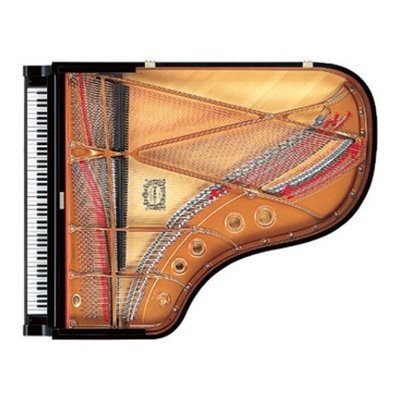
Narrow tail design
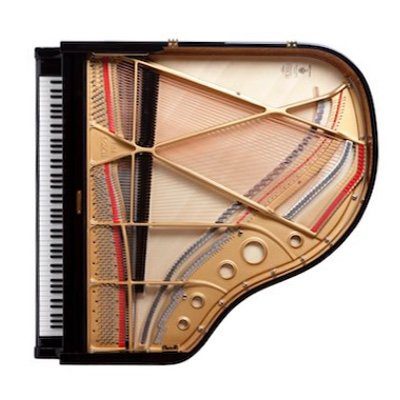
Wide tail design
Another “modern” addition to the baby grand, which enhances its performance by German pianomaker Bluthner: the aliquot bar. Aliquot stringing is the use of extra, un-struck strings in the piano for the purpose of enriching the tone. If you find a baby grand with aliquot stringing, you know it’s a premium instrument. Some pianos use individual aliquots, some have devised “bars” to hold the aliquot strings, and others have created a stainless-steel track, fixed to the cast-iron plate, on which individual aliquots slide. Regardless of how they’re designed, they’re a good indication of a superior piano. It is improvements of this nature that have been applied since the days of Cristofori that might define “modern.”
We find that an explosion of piano innovations to truly delight the eye have renewed the public’s interest in baby grands. As a result, these instruments have become the focus of interior designers who include them in décor schemes of the modern homes of today. Piano makers are having a renaissance in customization, giving the modern piano all the attributes of stylized furniture, art treasures, and even acrylic embellishments which creates an almost “weightless” look to a baby grand.
In today’s market, it is not enough for a piano to just be a piano. Designers and decorators increasingly view pianos as a “statement piece” to enhance their clients’ décor. Designers representing different demographics may be seeking what some might perceive to be a strange piano to complement a totally unique décor; or perhaps searching for cool pianos for the purist or the avant gardists.
The Modern Upright piano
Uprights tend to be the stepchild in the piano industry, but due to streamlining and new inventions, they have really come into their own. Upright pianos enjoy a new reputation as “modern uprights” due to engineering innovations and a lot of beautiful case designs. One of our favorite German piano makers, Sauter, is responsible for both. Six generations of Sauters have owned the company since 1819. They are known for their meticulous quality and performance but at the same time, never forget that beautiful cases count with their customers. For starts, Sauter makes its own keys. The keybed is reinforced with steel to prevent warping, and all of their pianos are fully tropicalized for humid climates. The larger verticals use an action, designed and patented by Sauter. It contains an auxiliary jack spring which aids in faster repetitions. Sauter calls this the R2 Double Escapement action. (Although the term double escapement does not apply here as it has historically been used, the mechanism has some of the same effects.) Producing approximately 800 verticals and 120 grand pianos each year, their acoustical parts are made of high-quality woods, at a factory at the foot of the Alps.
In addition to Sauter’s famous technical innovations, they were forward thinking enough 20 years ago to commission a famous German designer, Peter Maly, to design a line of upright and grand pianos. The distinct modern lines of Maly combined with Sauter’s technical know how, has produced some of the most exciting uprights in the market.
Sauter offers some customization choices in these models. The Maly uprights are enough to inspire any designer.
These beautiful uprights have enough “oomph” to satisfy the most discerning buyer, and give performance qualities that exceed most of the economical baby grands on the market.
Another Maly design worth noting is the 48″ upright Vitrea, after the Latin word for glass, with a veneer of colored glass covering the front of the cabinet. It’s hard to get more European or more dramatic than this. Indeed, Maly designs very cool pianos.
About Euro Pianos Naples
Euro Pianos Naples is a respected distributor of European luxury musical instruments. The company’s origin dates back to 1965. Euro Pianos represents world renowned brands such as Sauter, and it has recently become a manufacturer of its own acrylic instrument – The Aire. Apart from being a successful retailer, consultant, and entrepreneur organization, Euro Pianos is actively engaged in the artistic and community life of Naples, Florida as an organizer and supporter of musical events throughout the years.


